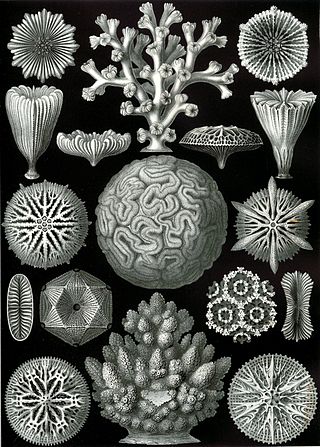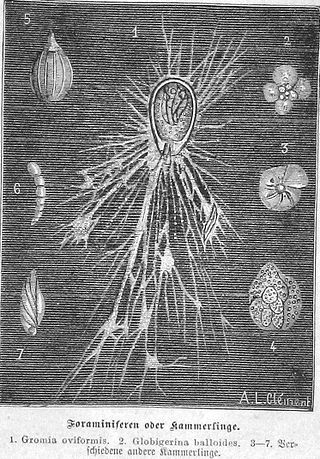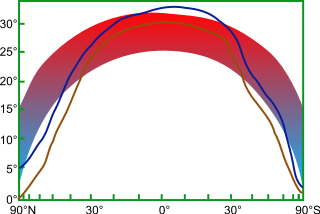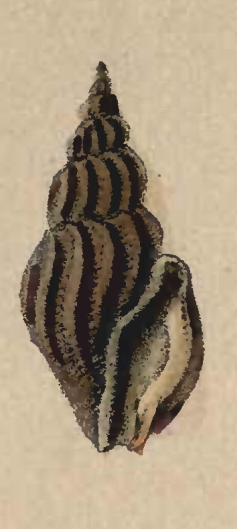
The ringed seal is an earless seal inhabiting the Arctic and sub-Arctic regions. The ringed seal is a relatively small seal, rarely greater than 1.5 metres (5 ft) in length, with a distinctive patterning of dark spots surrounded by light gray rings, hence its common name. It is the most abundant and wide-ranging ice seal in the Northern Hemisphere, ranging throughout the Arctic Ocean, into the Bering Sea and Okhotsk Sea as far south as the northern coast of Japan in the Pacific and throughout the North Atlantic coasts of Greenland and Scandinavia as far south as Newfoundland, and including two freshwater subspecies in northern Europe. Ringed seals are one of the primary prey of polar bears and killer whales, and have long been a component of the diet of indigenous people of the Arctic.

Nototheniidae, the notothens or cod icefishes, is a family of ray-finned fishes, part of the suborder Notothenioidei which is traditionally placed within the order Perciformes. They are largely found in the Southern Ocean.

Xenophyophorea is a clade of foraminiferans. Xenophyophores are multinucleate unicellular organisms found on the ocean floor throughout the world's oceans, at depths of 500 to 10,600 metres. They are a kind of foraminiferan that extract minerals from their surroundings and use them to form an exoskeleton known as a test.

Foraminifera are single-celled organisms, members of a phylum or class of Rhizarian protists characterized by streaming granular ectoplasm for catching food and other uses; and commonly an external shell of diverse forms and materials. Tests of chitin are believed to be the most primitive type. Most foraminifera are marine, the majority of which live on or within the seafloor sediment, while a smaller number float in the water column at various depths, which belong to the suborder Globigerinina. Fewer are known from freshwater or brackish conditions, and some very few (nonaquatic) soil species have been identified through molecular analysis of small subunit ribosomal DNA.

Scleractinia, also called stony corals or hard corals, are marine animals in the phylum Cnidaria that build themselves a hard skeleton. The individual animals are known as polyps and have a cylindrical body crowned by an oral disc in which a mouth is fringed with tentacles. Although some species are solitary, most are colonial. The founding polyp settles and starts to secrete calcium carbonate to protect its soft body. Solitary corals can be as much as 25 cm (10 in) across but in colonial species the polyps are usually only a few millimetres in diameter. These polyps reproduce asexually by budding, but remain attached to each other, forming a multi-polyp colony of clones with a common skeleton, which may be up to several metres in diameter or height according to species.

Gromia is a genus of protists, closely related to foraminifera, which inhabit marine and freshwater environments. It is the only genus of the family Gromiidae. Gromia are ameboid, producing filose pseudopodia that extend out from the cell's proteinaceous test through a gap enclosed by the cell's oral capsule. The test, a shell made up of protein that encloses the cytoplasm, is made up of several layers of membrane, which resemble honeycombs in shape – a defining character of this genus.

In biogeography, a cosmopolitan distribution is the range of a taxon that extends across most or all of the surface of the Earth, in appropriate habitats; most cosmopolitan species are known to be highly adaptable to a range of climatic and environmental conditions, though this is not always so. Killer whales (orcas) are among the most well-known cosmopolitan species on the planet, as they maintain several different resident and transient (migratory) populations in every major oceanic body on Earth, from the Arctic Circle to Antarctica and every coastal and open-water region in-between. Such a taxon is said to have a cosmopolitan distribution, or exhibit cosmopolitanism, as a species; another example, the rock dove, in addition to having been bred domestically for centuries, now occurs in most urban areas around the world.
Lukas Hottinger was a paleontologist, biologist and geologist. Hottinger collaborated with the Natural History Museum of Basel (Switzerland).
Actinoceras is the principal and root genus of the Actinoceratidae, a major family in the Actinocerida, that lived during the Middle and Late Ordovician. It is an extinct genus of nautiloid cephalopod that thrived in the warm waters of the United States and England during the Paleozoic era.

The cool tropics paradox is the apparent difference between modeled estimates of tropical temperatures during warm, ice-free periods of the Cretaceous and Eocene, and the colder temperatures which proxies suggested were present. The long-standing paradox was resolved when novel proxy derived temperatures showed significantly warmer tropics during past greenhouse climates. The low-gradient problem, i.e. the very warm polar regions with respect to present day, is still an issue for state-of-the-art climate models.
Alveolinella is a genus of larger fusiform porcelaneous alveolinids from the Miocene to Recent with apertures on the septal face in multiple rows and aligned partitions (septula) dividing the primary chambers. Aveolinella is a larger foraminifer from the milioline family Alveolinidae. Like other miliolines, they have imperforate porcelaneous walls.
Sactoceras is an extinct nautiloid cephalopod that lived during the Ordovician and Silurian in what would become North America, Europe, and Asia.

Pseudodaphnella barnardi is a species of sea snail, a marine gastropod mollusk in the family Raphitomidae.
Kobyashiceras is an extinct genus in the cephalopod order Actinocerida, from Lower Devonian marine sediments in Japan. The type and sole included species is Kobayashiceras gifuense. The generic name honors the late Dr. Teiichi Kobayashi who contributed greatly to the study of Paleozoic cephalopods. The specific name is derived from Gifu, the name of the prefecture in which the type locality is found.
Antimargarita dulcis is a species of sea snail, a marine gastropod mollusk in the family Margaritidae.
Schwagerina is an extinct genus of fusulinacean Foraminifera that is used as an Early Permian index fossil. The overall shape of the shell or test is fusiform to subcylindrical, the spirotheca, or outer test wall, is thick, and composed of tectum and alveolar keriotheca; the septa are fluted throughout the length of the shell, intense to top of chambers in some, only in lower parts in others; axial fillings highly variable, chomata distinct or thin and discontinuous.
Globigerinoides is an extant genus of shallow-water planktonic foraminifera of family Globigerinidae. First appearing in the Oligocene these foraminifera are found in all modern oceans. Species of this genus occupy the euphotic zone, generally at depths between 10-50m, in waters which cover a range of salinities and temperatures. They are a shorter lived species, especially when compared to Globorotalia genus. As a genus Globigerinoides is widely used in various fields of research including biostratigraphy, isotope geochemistry, biogeochemistry, climatology, and oceanography.

Mangelia sicula, common name the Sicilian mangelia, is a species of sea snail, a marine gastropod mollusk in the family Mangeliidae.

Pseudodaphnella tincta is a species of sea snail, a marine gastropod mollusk in the family Raphitomidae.

Foraminiferal tests are the tests of Foraminifera.











